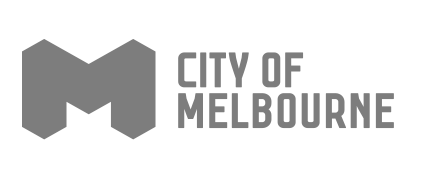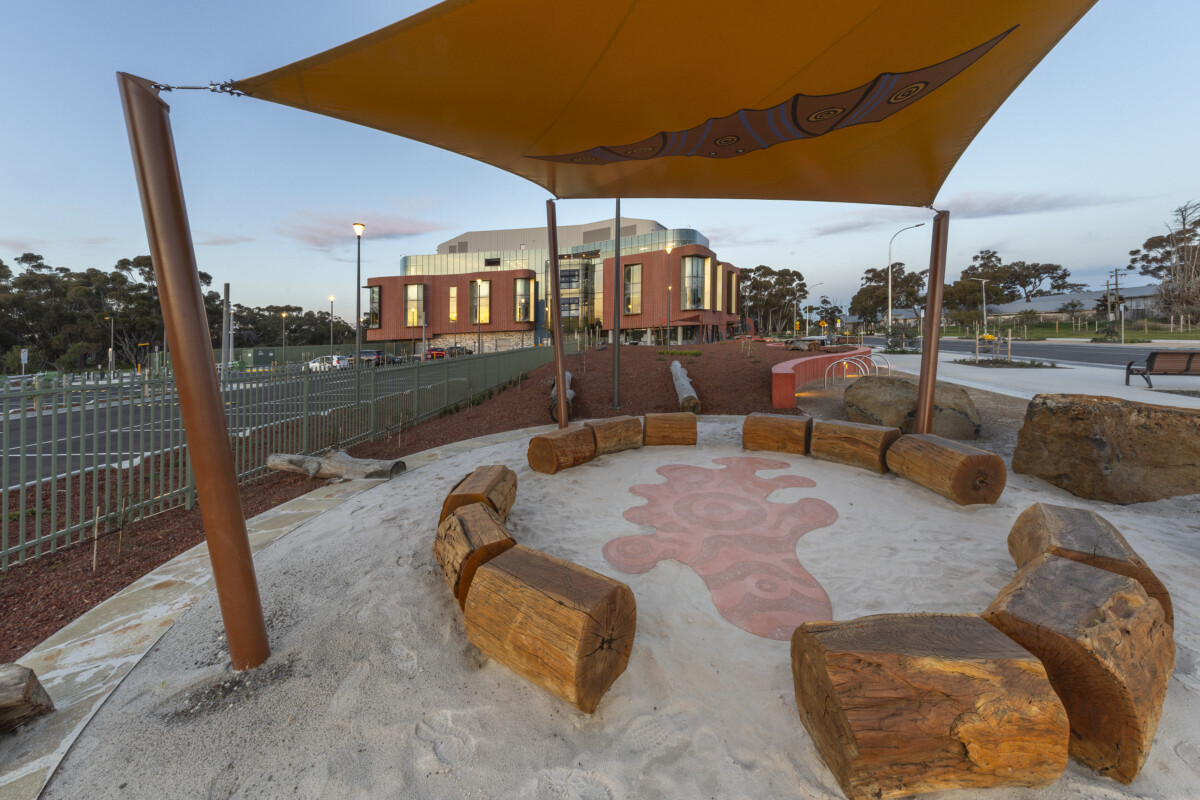
Werribee Creation Story, Gathering Space and Firepit, 2025
Design by Fiona Clarke (in collaboration with Ken McKean), Kirrae Whurrong / Gunditjamara people
The Gathering Place and Firepit areas were designed and created to make a place where people attending court whether defendants or not, but involved, can come and contemplate their actions past, present and future, or to feel safe or to embrace their cultural heritage and as a place where important events can be celebrated and a place for healing for all attendees.
The elements of this artwork are all inspired by the creation of the Werribee, (Backbone) River where Bulyang, (Bunjils brother, bat) was asked by Bunjil to form the rivers, creeks and billabongs and streams so Bulyang got his stone axe banged it on the ground and the waterways were formed. It is also said that Bunjil created everything that was basalt, Yawirn created everything that was granite and Bulyang created everything that was water, such as rivers, creeks billabongs and streams.
Bulyang the bat then taught Gannawarra, (the black swan) and Buringit, (the brolga) how to hunt and catch eels which help to sustain the custodians of the land.
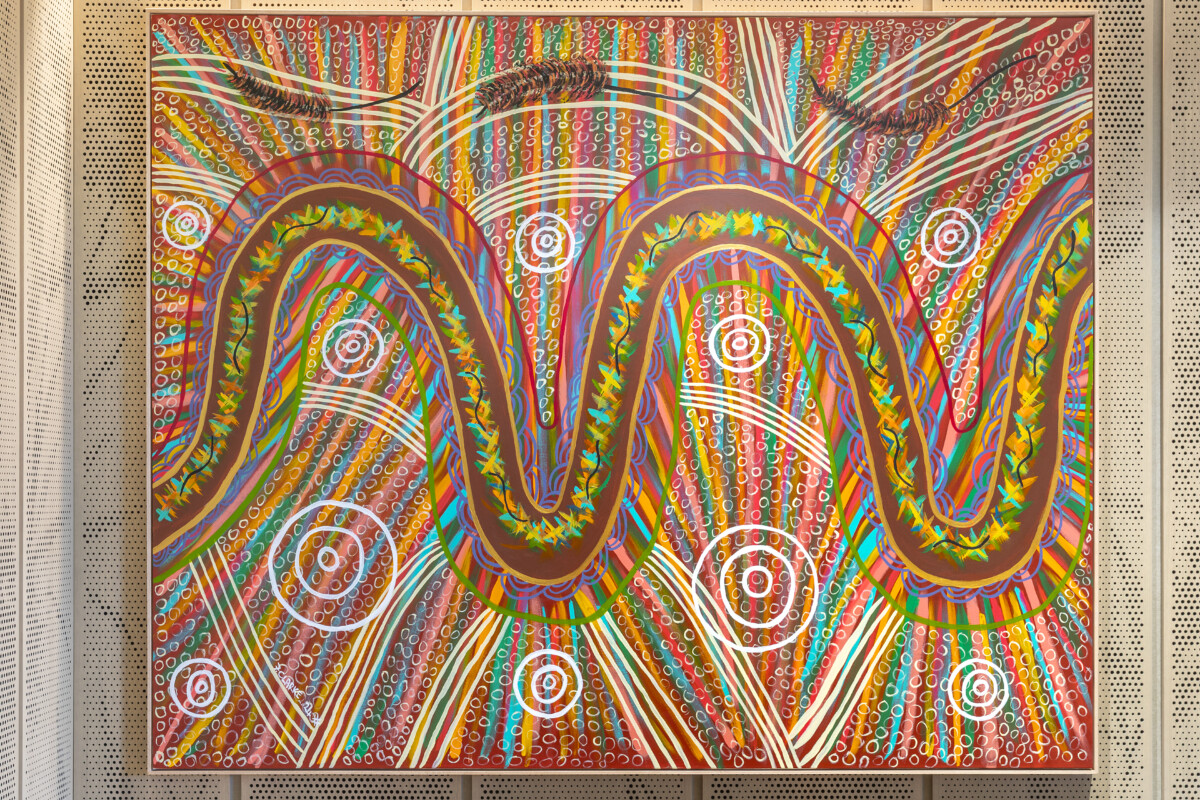
Rainbow Serpent Werribee River, Canvas, 2024
Fiona Clarke, Kirrae Whurrong / Gunditjamara people
Bulyang (Bunjil’s brother the bat) is said to have been told by Bunjil to form the rivers, creeks, billabongs and streams so Bulyang got his stone axe and banged it on the ground and these waterways including Werribee (Backbone) River were formed. It is also said that Bunjil created everything that was basalt. Yawirn formed everything that was granite and Bulyang created everything that was water, such as rivers, creeks, billabongs and streams.
This painting ‘Werribee’ (Backbone) echo’s this story, then the people and tribes gathered along the river to meet. The many colours in the background represent all the Aboriginal seasons as the eels swim up the river, spawning and helping First Nations people survive and keep sustained. The lines are all the tracks that are used by humans and animals to reach the magnificent river. The bottlebrush represents the beautiful fauna that is also helped to survive by the river and by Mother Earth. All the little circles are all the rocks, stones and trees of the land.
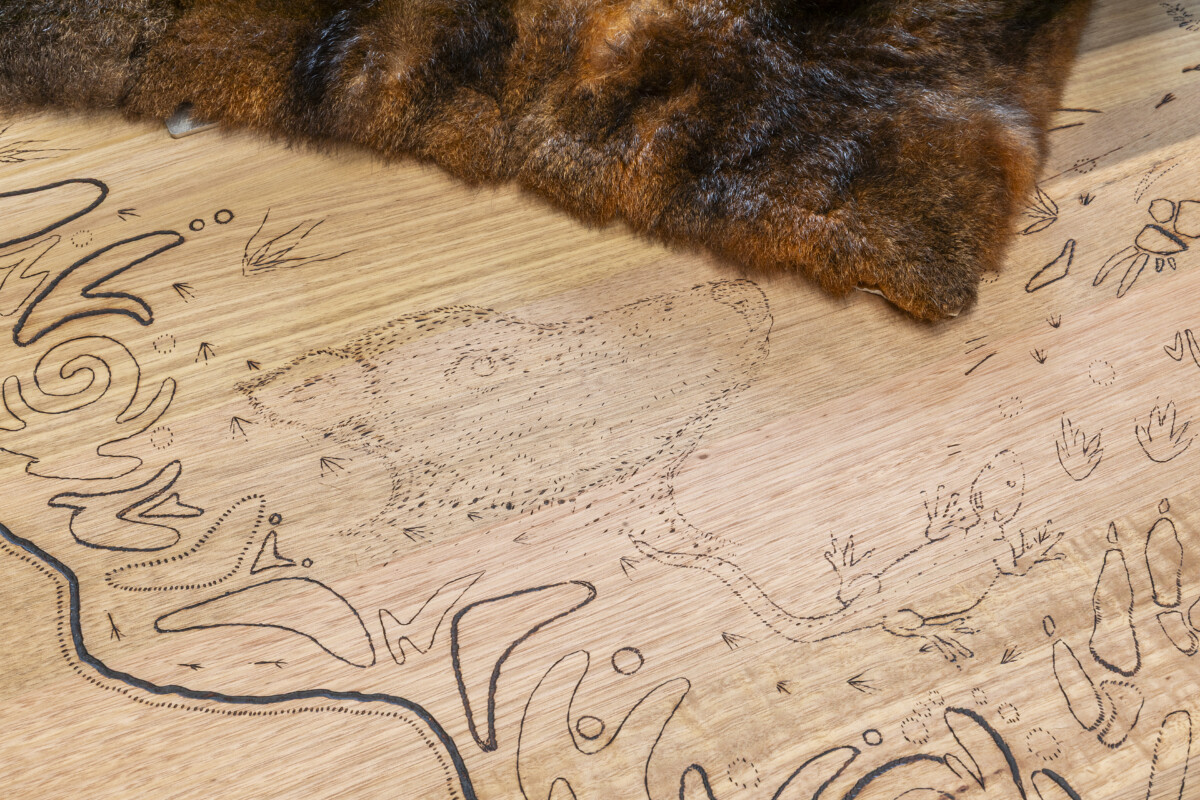
Bunurong Cultural Landscape Map
Adam Magennis, Bunurong people
The design reflects a section of the cultural landscape of Bunurong Biik. Bunurong people are saltwater people where sea country is integral to Bunurong culture and where Mother and Baby Dolphin are one of the stewards of our sea country. The design elements show the cultural ecology across the landscape where animal tracks mark and connect each ecology, habitat, landform and wetland, where song lines integrate in synergy with the animal tracks across Biik and where Bunurong living floors are specially selected by Bunurong ancestors along our Bunurong song lines and animal tracks. The pin stripe design elements at either end of the table reflect the stratigraphy of Bunurong sea country and the cultural shell layers created by our Bunurong ancestors. These layers are connected to our sea country habitats including inter tidal reef systems, deep water reefs, mangrove mud flats and coastal estuaries. The overall design is just a snapshot of the diverse and unique cultural landscape of Bunurong Biik.
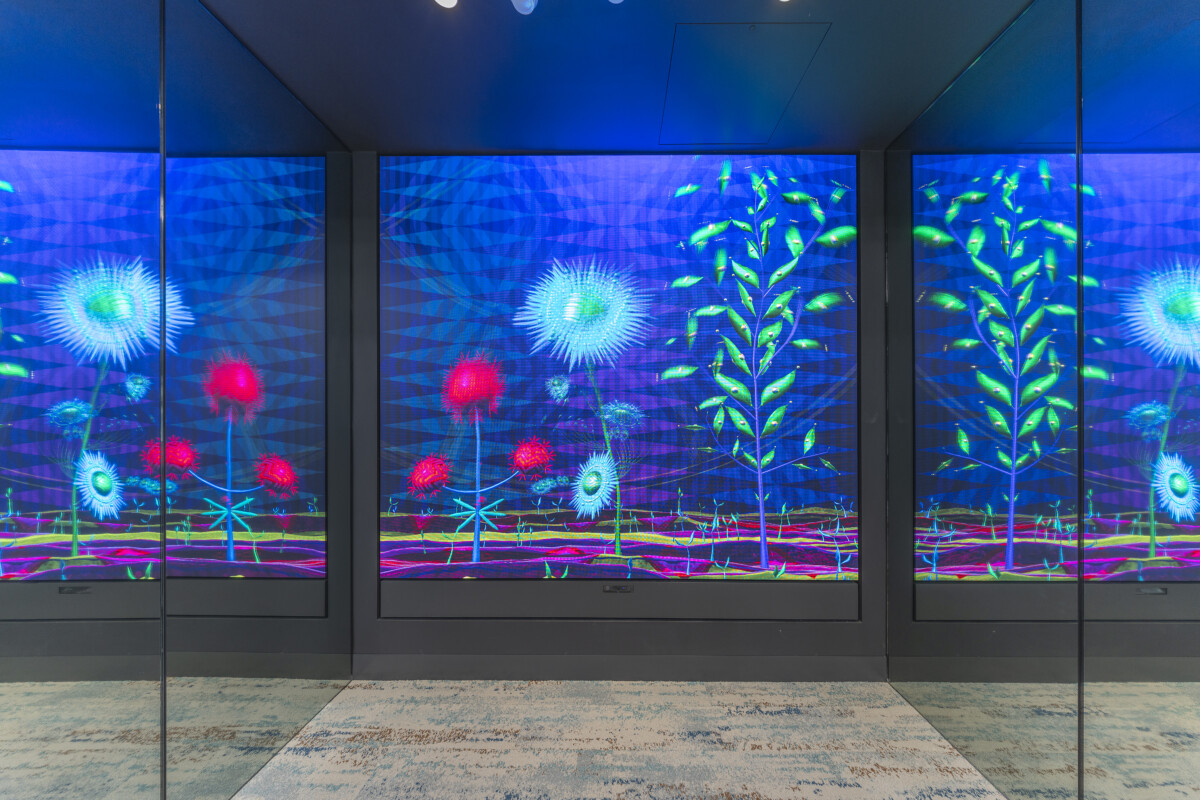
Grow (Interactive Art Screen)
Betty Sargeant (in collaboration with Traditional Owner Artist Jarra Karalinar Steel)
Grow is more than just an artwork, it is an interactive journey that celebrates nature, creativity and cultural heritage. By providing a unique and engaging experience, Grow will leave a lasting impression on its audience, fostering a grounded sense of connection, growth and transformation.
Each scene reflects creative interpretations of local botanicals and natural features, connecting audiences with their surrounding environment. The artwork empowers children to use their body movements to ‘grow’ each scene, with the vibrant and dynamic natural forces depicted in the artwork giving each person engaging with the artwork an opportunity for reflection.
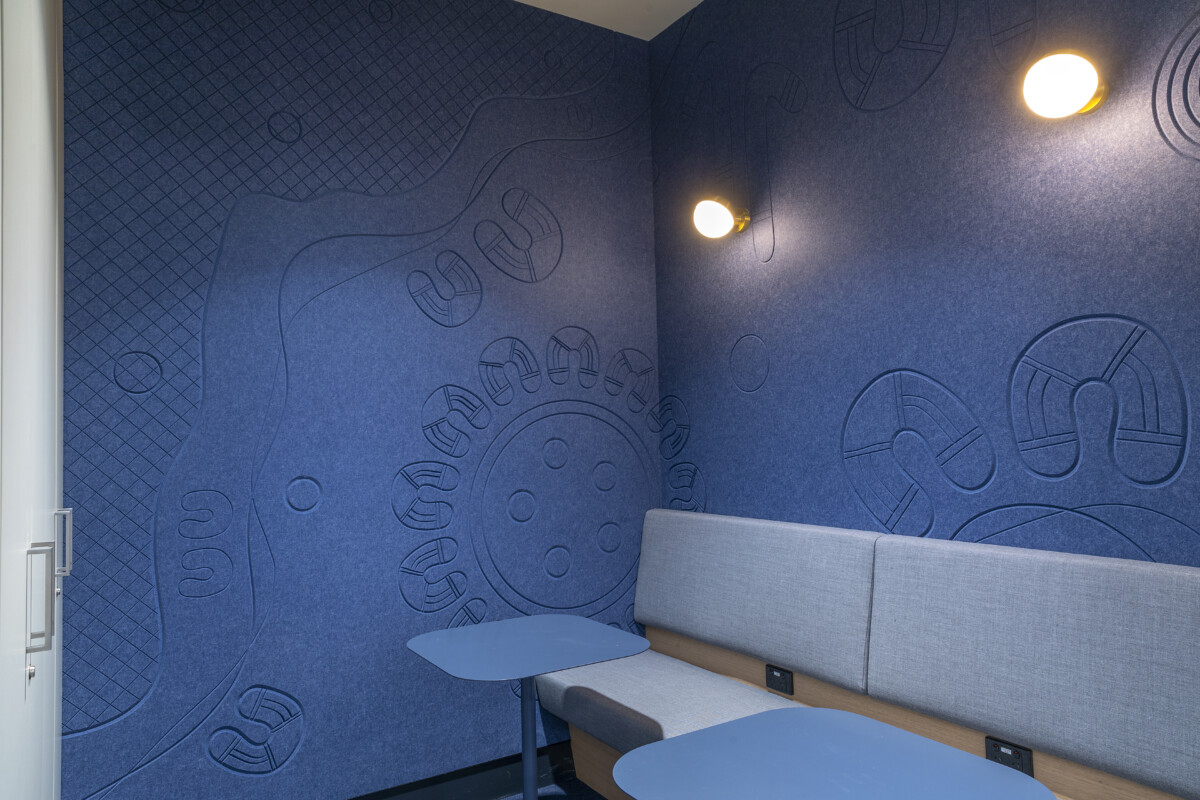
Traditional Owner artwork design applied to fabric in acoustic panels
Kobi Sainty, Bunurong / Palawa people
The artwork in the acoustic panels is channelling parts of both the stories in my column artworks, Connection to Country, water, community and culture.
I’ve used the Men’s and Woman’s symbols to represent everyone in our community and acknowledge the special business that we do that plays a big part in our culture still to this day. You will see lines that represent the water and river with U’s inside showing the community sharing knowledge and understanding the importance of this area. Within the water/river you will see the cross hatching that is to represent our fishing nets and hunting and gathering
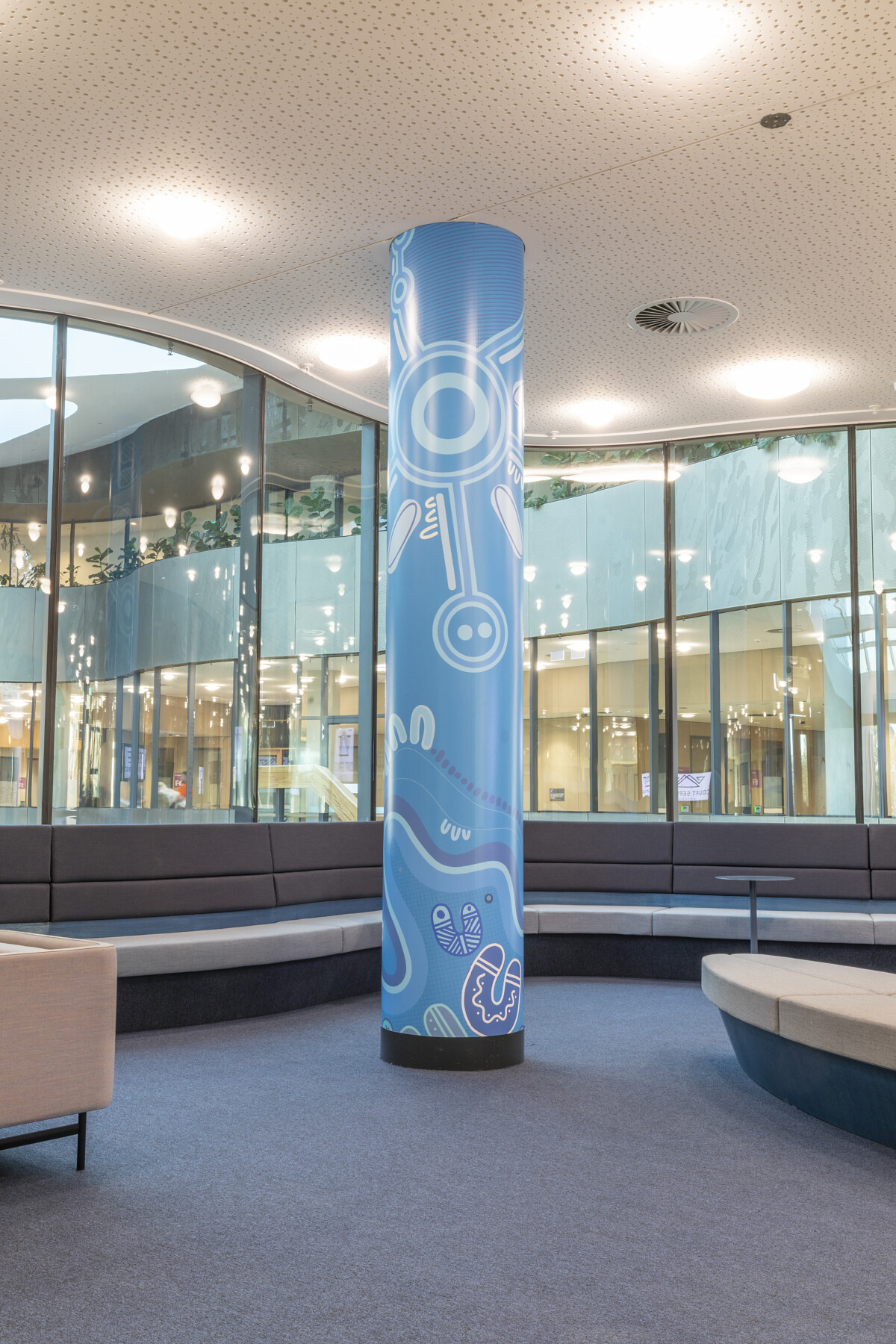
Traditional Owner artwork applied to one concrete column via a vinyl wrap
Kobi Sainty, Bunurong / Palawa people
With this artwork I wanted to connect with the Werribee River which is a strong Bunurong area that has so many strong connections to our old people and is very close to the building. I have placed different gathering places around the artwork to showcase our Bunurong apical ancestors, our five grandmothers who all Bunurong people come from. Such strong women to represent throughout this space because we wouldn’t be here without the hard work and sacrifices, they made.
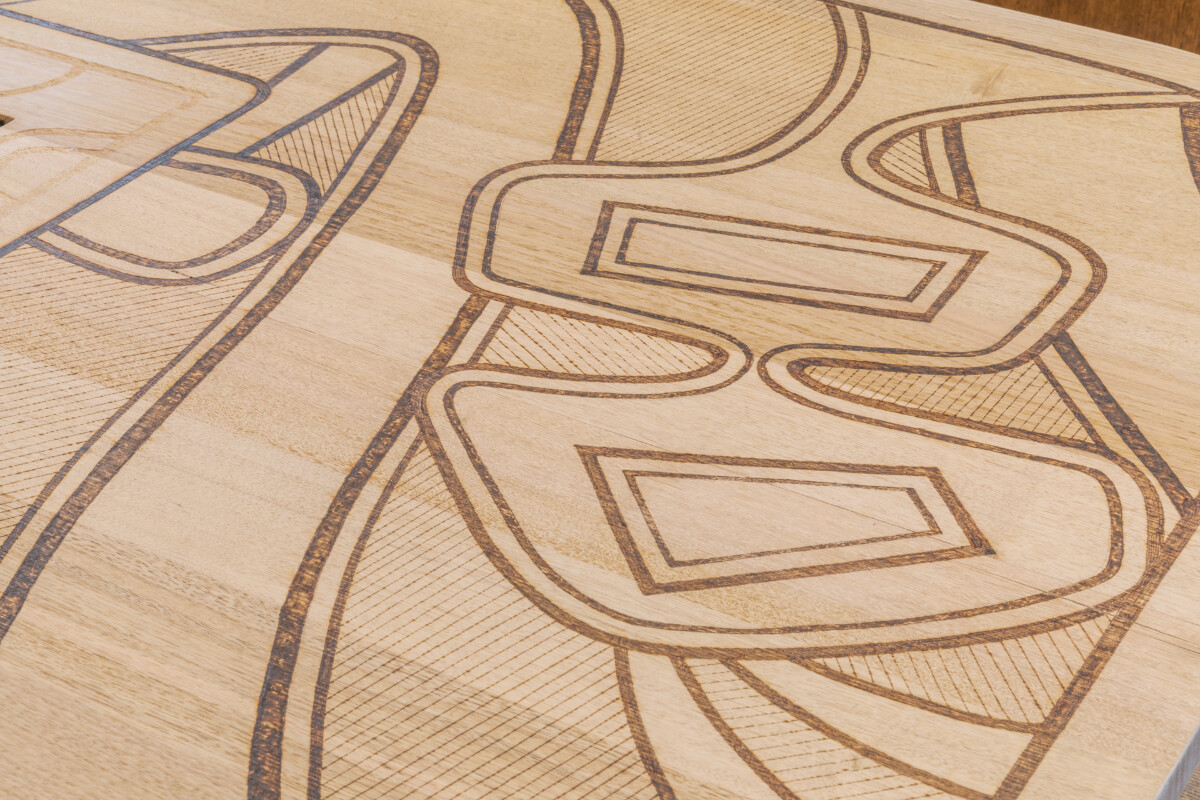
Bunjil's Yarkeen - Bunjil's Vision
Tommy Day III (Jirri Jirri), Gunditjmara/Yorta Yorta/Wemba Wemba people
A symbol of equity and understanding. Each burn on the table is a seed, planting roots of comprehension and empathy. The central pattern weaves a tapestry of understanding, uniting diverse voices in pursuit of fairness and justice. The idea is to cultivate a culture of inclusivity and mutual respect, where every voice is heard and every perspective honoured, fostering a community of equity and harmony.
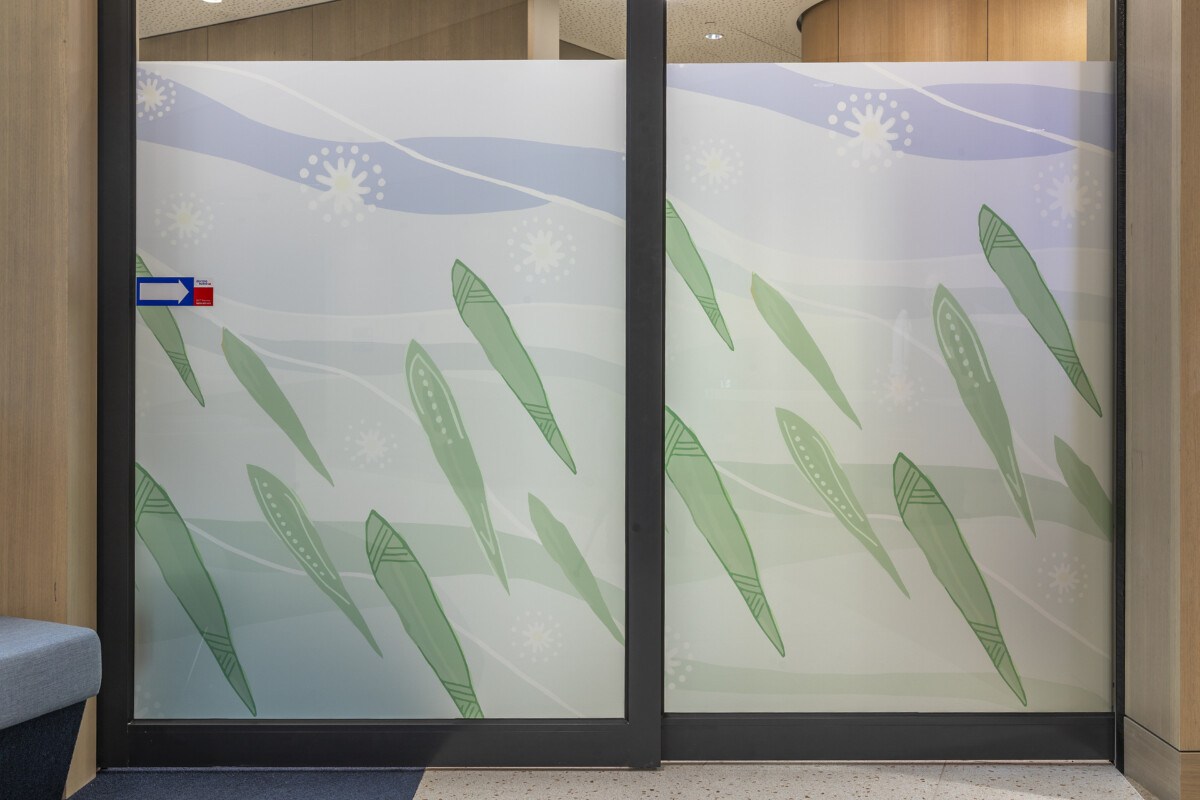
Being on and connecting to Country (decals)
Kylie Armstrong, Arrernte people
Being on and connecting to Country, we understand that the land is not separate from us, it is a presence that teaches us. By connecting to Country, we open ourselves to deeper wisdom, finding pathways that lead to a sense of belonging and harmony.
As we walk lightly across country, taking time to see, touch and smell the plants around us, allows time for reflection and growth. Each steps brings clarity and shifts our perspective to one of patience, respect, and understanding.
In the presence of our native animals – watching them move, play and adapt – we are reminded of our own strength and resilience. Their ability to overcome challenges mirrors our own journey, encouraging us to be mindful of our choices and to trust in our path.
As you walk on Country, move with reverence and humility. Allow yourself to connect deeply with the land, waterways, the plants, the animals, and with one another. Through these practices, we awaken a sense of purpose, a knowing that we belong, and a collective spirit that nurtures the strength of community and unity.


